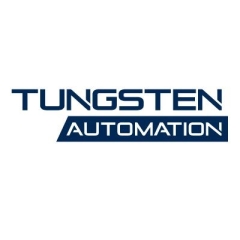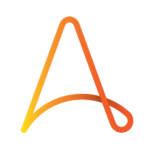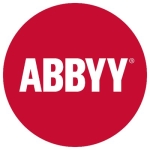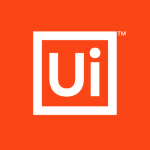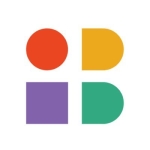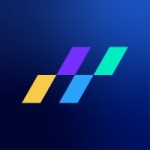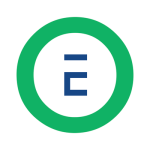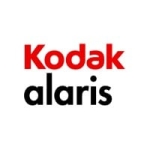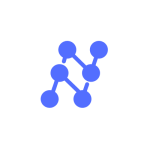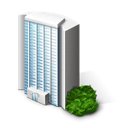What is our primary use case?
It is an OCR software that can be used to extract the data from PDFs, add input channels, or PDFs that came from email. You have scans configured so that you can extract the data from the scanned image and fax. There are several input channels. It's all different according to your business and how you will extract that data from your input channel.
What is most valuable?
There are several use cases, from simple to complex workflows, as per the customer requirement. If you are talking about the BPM capabilities, Kofax is clearly a winner in that area. Other software tools have basic OCR. However, if you want to use some complex business processes, then Kofax is excellent as compared to other tools.
Kofax TotalAgility is a single package. They provide you with OCR capabilities, BPM capabilities, and case manager features. Apart from that, now they have RPA and some other tools, which are very clearly integrated with other solutions. They have a very good ecosystem.
If you need invoice processing, it suits account payable systems. Or in medical trial tasks, it can also be used there for the insurance sector and banking. There are several use cases where you can apply Kofax TotalAgility to different domains or areas.
It has knowledge-based learning. For example, if you have implemented accounts payable solutions for your company and you are getting different invoices, every organization has its own format of invoices. Therefore, invoice processing is quite complex. You have to deal with the end number of vendors; every vendor has their end number of templates defined for that invoice. It can process these easily.
We divided it into three categories. One invoice is very basic, and we can send it in a fixed form. Second, when you structure it, some data might be changed. However, it is still a fixed form. Then there is a third, unstructured, and you don't know where the data will appear. For the same supplier, sometimes you get the data from the top date, invoice number, or maybe on the bottom. However, in any case, this solution will handle the information quickly.
It has very good learning capabilities. It will learn from the user feedback. For example, if you have some documents which come to your system and are quite complex. Maybe the date format is slightly changed, or some amount is changed, and you cannot extract it. A typical user will manually learn via that data and enter it. It'll also ultimately learn. That way, the next time, it'll automatically extract the data, and that process will no longer require any manual intervention of the user.
What needs improvement?
When I'm talking about low-code development, they are consulting on a new product with low-code. This means that now you won't have to build that script. It's just a simple single centralized development tool where you can drag and drop things. You can just drag and create your form using drag and drop features, and you can implement your own business logic.
It’s not truly low code yet, as every two or three projects, you will have a situation where you have to go behind the essential things. You will definitely still need to customize. You cannot yet really rely on low-code development. If you have a complex business requirement, you must build that complex script.
Previously, it did not support all browsers. However, it’s my understanding that they have since changed that shortcoming.
They have to create a few different packages. For example, let's say we are in the insurance sector. The insurance sector will have a specific set of processes. If they could give us a framework where I don't have to be concerned about how to build the form, something already heard towards insurance, that would be ideal.
At least 80% of my time will be on implementing business cases rather than building software processes. I just want this to have some use case differences and some pre-built solutions based on industry. That way, a user can directly apply their business cases to that and it'll be like a ready-made solution - or at least 90% ready-made. The last 10% we can feed our inputs into more easily.
For how long have I used the solution?
I have around five years of experience using Kofax TotalAgility.
What do I think about the stability of the solution?
The solution is very stable.
They are the leaders of BPM. We get lots of fixes as needed and their support is very good. It’s reliable. The performance is great.
What do I think about the scalability of the solution?
Scalability, as compared to other software, is excellent. We have active cluster testing also involved in that project. Therefore, you have multiple instances of application servers in a very secure environment.
There are various different transitions, and we require that system to be very scalable. It's very good in terms of scalability. It can support the failover as well. You can configure it as per your requirements.
It requires some additional cost in terms of hardware. However, active clustering is also supported. If one node is down, it'll definitely pick up another server with only a few seconds of interruption.
How are customer service and support?
Technical support has been good, and we have been happy with their capabilities.
Which solution did I use previously and why did I switch?
I had started my career as a technical consultant with another OCR tool, and initially, it was with Dell, now OpenText. Later I moved to the Kofax.
We have two pieces of software that we use. We are using accounts payable software, and we have OCR software. If you're talking about OCR, we are not only dealing with Kofax.
Some clients also have ABBYY. Somewhere we are using Captiva also, for a few of the government organizations, and now we have some small tool which is called Xtracta which we are using with some very small accounts, where we need invoices for maybe 50 invoices or 100 invoices per day.
How was the initial setup?
As compared to other software, and I'm not saying it's complex and easy, is that Kofax gives you the OCR capabilities plus business, including BPM capabilities, case management, and data management. Therefore, it has some additional components which we need to install on the server. It came with an applicant server and with a web server, and it has its own SQL database on the back end. It has its core designer, Transformation Designer. It definitely came with different components. In terms of the installation, I consider that the installation will be a little bit complex as compared to other software since we are dealing with more components here.
Deployment is very fast. Now they have this very centralized development tool. You can create a package. We have a list where you created the process, forms, and different scripts, so there are some processes that vary. You can create a package directly and just select whatever form you need.
What was our ROI?
We’ve seen an ROI. They're charging you more as compared to other options. However, they give you more features. There’s more value.
What's my experience with pricing, setup cost, and licensing?
The price depends on how your relationship is with Kofax. Sometimes you get a discount. However, I’m not aware of what a standard price is.
Which other solutions did I evaluate?
The market is really competitive. ABBYY is also one of the leaders in the space. Apart from that, there’s IBM Datacap, then there are some small vendors which have their own tools.
What other advice do I have?
We are resellers.
We have some existing clients using it, and they are happy with Kofax. That said, currently, in the market, I'm seeing that it is very competitive now. There are some other very small vendors. That might beat it in terms of costs. These competitors are pretty cheap.
However, if you want different capabilities and other things, then definitely, Kofax is the very best tool.
I’d advise potential new users to consider the use cases and the kinds of documents you will be processed with your Kofax TotalAgility. Consider items such as the expected volume and number of users. Do you really require the BPM process? Are processes complex?
Kofax is very good for complex business processes. However, it may not be necessary if you don’t have complexity. With Kofax, it can support any end number of possibilities and end number of use cases if that sounds like what your company needs, then it is perfect.
I’d rate the solution nine out of ten.
Which deployment model are you using for this solution?
On-premises
Disclosure: My company has a business relationship with this vendor other than being a customer. partner/reseller

